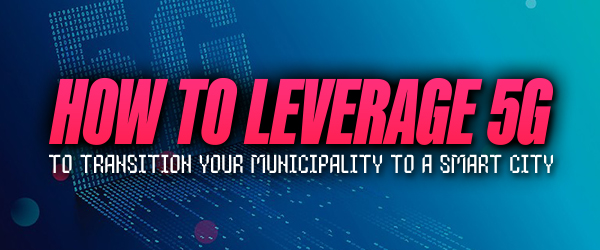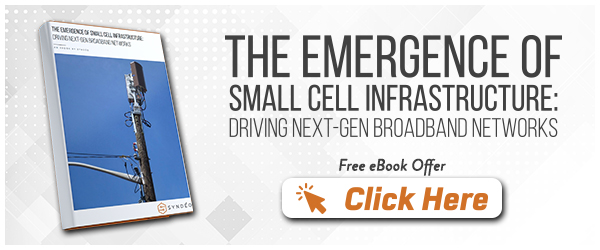
How to Leverage 5G to Transition Your Municipality to a Smart City
With the use of 5G, cities can accelerate their Smart City adoption while also creating jobs and increasing government revenue. This article explores 3 specific realms—energy and utilities, transportation, and public safety—to show what’s possible when municipalities welcome next-generation wireless technology. Keep reading to find out all the doors that 5G can open for any city on the map.
Energy and Utilities
The promise of 5G has brought a new wave of Smart Grid technology with it—a grid that is estimated to bring in 2 trillion dollars in benefits within just 20 years. The Smart Grid integrates individual devices through a low-cost 5G connection, lowering energy consumption, costs, and electricity peaks. 5G, which is more cost-effective and efficient than all past generations of wireless technology, can help both small and large cities reduce downtime during outages and increase their energy efficiency.
5G can also be used to facilitate smart lighting. Smart lighting dims public lighting when no cars or pedestrians are around, saving power, costs, and reducing light pollution without compromising the safety of a city. Incredibly, smart lighting that’s connected to a city’s broadband network also can monitor air quality, furthering both environmental and safety initiatives.
Transportation
5G will also have a significant impact on public transportation, traffic, and parking. Wireless technologies can give minute-by-minute information to transit operators about who is using the transit system, when they’re expected to use it, and where the largest groups are located, all of which can help to optimize bus routing and decrease wait time.
Traffic congestion can also be alleviated by as much as 40% through the use of traffic management enabled IoT. Smart Traffic Management systems can often support autonomous vehicles as well, which can help decrease congestion and increase productivity within cities.
Low-cost 5G sensors installed on street lamps can identify vacant parking spaces to help drivers find places to park without driving in circles. With the use of these sensors, parking revenue increases, and driver frustration, congestion, and air pollution from idling and unnecessary driving are all mitigated.
Public Safety
Smart city technology can monitor areas to allow first-responders to see conflict and assess the scene before even being there. Furthermore, police and other first-responders can use facial recognition from ultra-high definition video feeds to identify suspects or locate missing persons.
Emergency warning systems can provide information regarding life-threatening weather, such as tornadoes or floods, which can assist dispatchers in terms of knowing where help is needed; it can even route people who are evacuating, eliminating road congestion and deaths caused by the use of flooded routes.
Wireless sensors also can detect gunshots, allowing authorities to be immediately alerted of their locations and, sometimes, even the type of firearm being discharged.
From the environment to natural disasters to simplifying the daily commute, 5G offers the potential to help with just about anything in a Smart City. The technology can provide alerts for both the safety and efficiency of daily events for residents, as well as decreasing costs while increasing revenue for the city itself. If all the jaw-dropping benefits of Smart Cities and 5G utilization pique your interest, it’s time to check out SYNDÉO. SYNDÉO is a leader in enabling city infrastructure to house Smart City technologies. Thanks to the help of its innovations, Austin, Texas won IDC’s 2018 Smart Cities North America award for Urban Design and Planning. If you’re ready to reap the benefits of revolutionary Smart City technology, reach out to SYNDÉO today.

